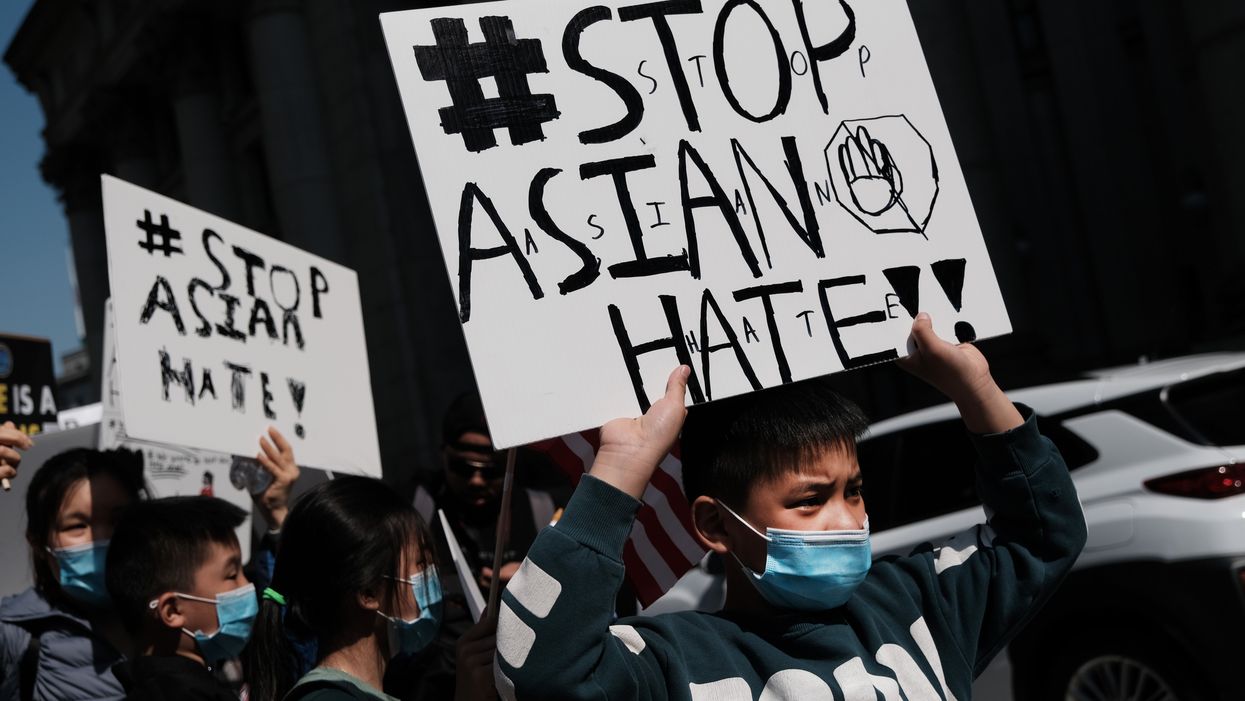Sandra Salathe
Apr 10, 2021

There are plenty of ways to support victims of hate crimes
Spencer Platt/Getty Images
Being victim to a hate crime is terrifying experience, and witnessing one can also be distressing due to the feeling of powerlessness.
However, when no-one intervenes to stop the harassment from continuing, it adds an additional element to the offense.
It doesn’t have to be that way.
For those witnessing to an act of hate, there are numerous steps you can take to intervene.
In light of increasing anti-Asian attacks in the US, we spoke to Asian Americans Advancing Justice – Asian American Justice Center to establish the steps someone should take to intervene when witnessing a hate crime.
Wherever in the world you are, they should prove useful.
Focus on the person being targeted, as opposed to the perpetrator
Usually when we witness someone being harassed, our initial thought is to approach the perpetrator. However, experts advise against this, as it may lead to the perpetrator becoming more agitated. Marita Etcubanez, director of Strategic Initiatives at Asian Americans Advancing Justice – AAJC suggests turning your focus to the victim instead.
“Often times the person doing the harassment is attention-seeking, and if you divert attention away from them, in many instances that will get them to stand down,” says Etcubanez. “ It also signals to the person being harassed that you’re there to help them.”
Etcubanez suggests ignoring the harasser and engaging directly with the victim of the hate crime. Examples can include asking for directions, or pretending knowing the person and casually leading them away from the perpetrator. Etcubanez also suggests pulling other individuals in and asking them to help.
“Typically we advise that you reach out to someone in a position of authority,” says Etcubanez. “So if you’re in a store, maybe an employee, or if you’re on public transit, perhaps a transit worker.”
Record the incident
Recording an incident while it’s happening can prove beneficial. However, there are many things to keep in mind when documenting safely and responsibly.
“Whatever documentation you capture, give it to the person who faced the harassment or the conflict, and let them decide what to do with it,” says Etcubanez.
Etcubanez adds that directly posting the recorded incident to social media might cause the victim more harm than good, and suggests allowing them the option to decide what to do with it.
Outline problematic behavior
If you do decide to directly engage with the perpetrator, underline their behavior out loud. Some examples include:
- “That’s inappropriate, disrespectful, not okay, etc.
- “That’s homophobic, racist, (insert type of harassment), etc.”
- “Stop that!
“With this we advise people not to get into a back and forth with the harasser, but rather name the problematic behavior,” says Etcubanez. “Your overall goal should be to take care of the person facing the harassment and get them out of there.”
Call the police - but ask the victim first
If someone is in need of medical assistance, obviously call the police. But first, Etcubanez says to ask the person being harassed whether or not that’s something they want. If it isn’t, there are various hotlines that can provide alternatives in how to respond in that moment.
“You really need to use your discretion in what feels appropriate to the moment,” says Etcubanez. “ You also have to trust your gut when assessing your own safety.”
In the US, you could try calling 1-844-NO-HATE where trained staff and volunteers will provide legal information about hate incidents and crimes, and provide callers with general information about reporting, as well as the kinds of legal remedies that may be available in different states.
In the UK, you can also contact Crimestoppers anonymously to report crime on 0800 555 111.
If you have witnessed discrimination or harassment, or if you’ve experienced it yourself you can also contact Tell MAMA
Check in on the victim of abuse
If you’re unable to act within the exact moment someone is being harassed, following up with the victim can make a huge difference. While Etcubanez considers this step to be the “lowest form of intervention,” its impact is lasting. Some examples includes asking the victim if they’re okay or accompanying them to their destination. Even just sitting with them for awhile can help.
“We are equipping people to address interactions in public that have the potential to escalate, or that are alarming but aren’t necessarily violent encounters, “ says Etcubanez.
To learn more about Hollaback! and the work Etcubanez and her team are implementing at Asian Americans Advancing Justice – AAJC, you can visit their website in the links above.
Top 100
The Conversation (0)













